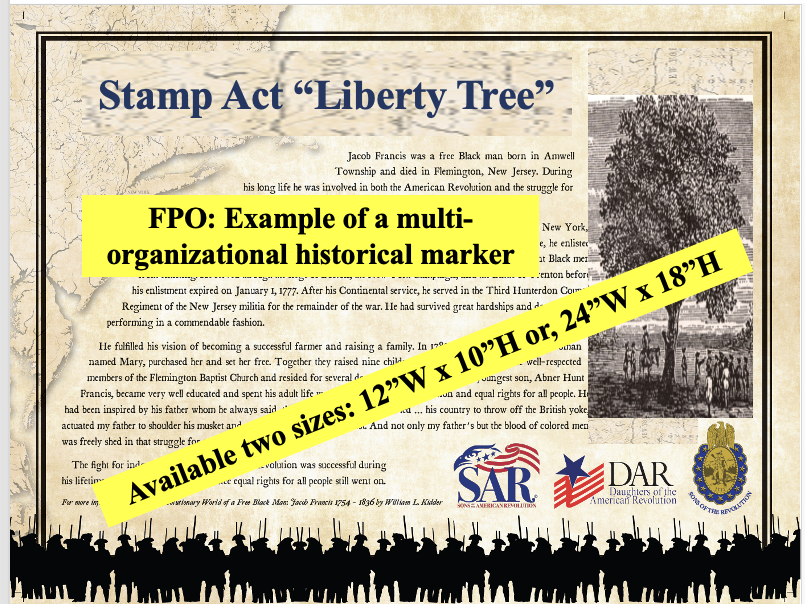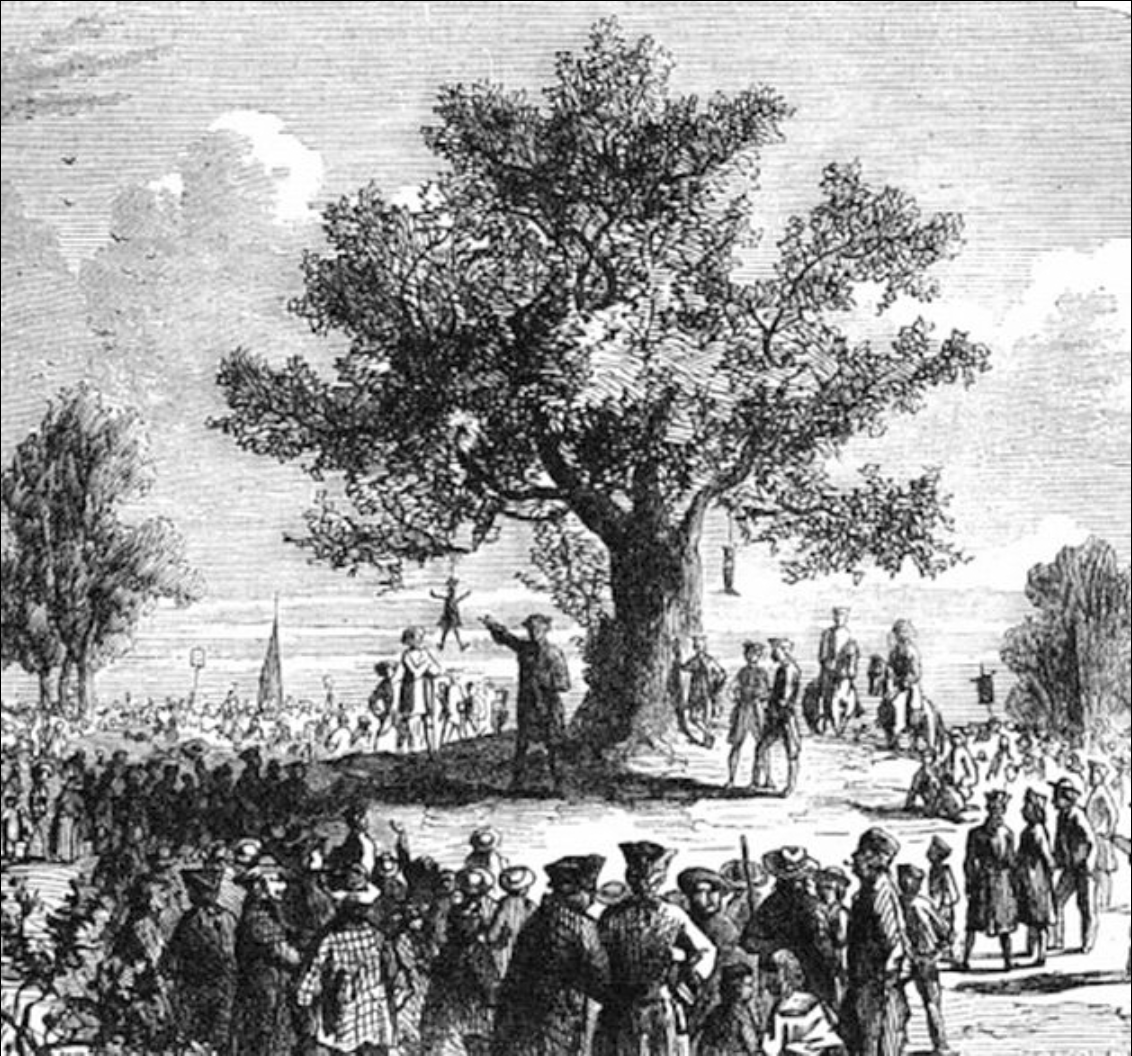Commemorate NewJersey250 in Your Community with a Liberty Tree!
New Jersey Society, Sons of the American Revolution, and New Jersey’s Compatriot Lineage Organizations would like to discuss planting a Liberty Tree in your community to commemorate the 250th Anniversary of the Birth of our Nation.
In the shadow of America’s Semiquincentennial, the New Jersey Society, Sons of the American Revolution, along with our compatriot lineage organizations, is interested in working with communities throughout the state to plant commemorative Liberty Trees as a symbol of America’s Revolutionary spirit that launched a nation. Once we agree on the logistics, the lineage organizations may supply your community with a Princeton Elm and a historical marker.
Planted in 1646 along Orange Street, the Liberty Tree became a symbol of protest against British rule. By March 1765, nearly 120 years old, it witnessed the colonists' outrage over the Stamp Act, which taxed documents in the colonies. The radical group Loyal Nine, part of the Sons of Liberty, led demonstrations, creating an effigy of Stamp Tax collector Andrew Oliver, hanging from the tree. A sign cheekily proclaimed, "What Greater Joy did ever New England see, Than a Stampman hanging on a Tree!”
In early 1766, John Adams met with the Sons of Liberty, advocating for peaceful petitions against the Stamp Act. Tensions escalated as threats of violence emerged. The tree's symbolism inspired other colonies to establish their own Liberty Trees.
Though the British Army cut down Boston’s Liberty Tree in 1775, its legacy lived on with various protests and events held at its location, including the burning of a customs commissioner’s boat and funeral processions for Boston Massacre victims. After the British left in 1776, a liberty pole replaced the tree, but by the 19th century, its significance had diminished, now marked by just a bronze plaque.




